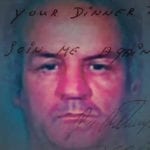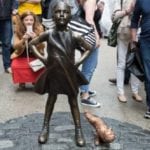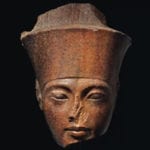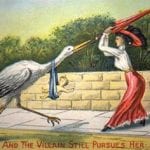 Weird Stuff
Weird Stuff  Weird Stuff
Weird Stuff  History
History 10 Legends Whose Last Moments Undid Their Glory
 Health
Health 10 Futuristic Ideas to Treat Common Medical Problems
 Weird Stuff
Weird Stuff Ten Surreal Attempts to Reverse Baldness
 Facts
Facts 10 U.S. Government Contingency Plans for the Unthinkable
 History
History 10 Weird Distractions from the Great Depression
 Movies and TV
Movies and TV 10 Fictional Kings Who Go from Good to Bad
 Food
Food The Fantastic Chemistry Behind Why 10 Popular Foods Taste So Good
 Technology
Technology 10 Futuristic Fungal Technologies
 History
History 10 Not-so-Spooky Events That Also Happened on October 31
 Weird Stuff
Weird Stuff 10 Things So Rare They’ve Only Been Found Once
 History
History 10 Legends Whose Last Moments Undid Their Glory
 Health
Health 10 Futuristic Ideas to Treat Common Medical Problems
Who's Behind Listverse?

Jamie Frater
Head Editor
Jamie founded Listverse due to an insatiable desire to share fascinating, obscure, and bizarre facts. He has been a guest speaker on numerous national radio and television stations and is a five time published author.
More About Us Weird Stuff
Weird Stuff Ten Surreal Attempts to Reverse Baldness
 Facts
Facts 10 U.S. Government Contingency Plans for the Unthinkable
 History
History 10 Weird Distractions from the Great Depression
 Movies and TV
Movies and TV 10 Fictional Kings Who Go from Good to Bad
 Food
Food The Fantastic Chemistry Behind Why 10 Popular Foods Taste So Good
 Technology
Technology 10 Futuristic Fungal Technologies
 History
History 10 Not-so-Spooky Events That Also Happened on October 31
10 Controversial True Crime Books
In journalism there is a saying: “If it bleeds, it leads.” Essentially, it means if there is bloody mayhem, chances are you’ll get a good story out of it. This motto is the basis for true crime stories. These stories, often in the form of novels, explore fascinating crimes and push them into the realms of infamous. These 10 books were so controversial that they add a new level of notoriety to already-nefarious crimes.
10American Desperado
Jon Roberts And Evan Wright

In crime, one rule that is often true is that snitches are the real villains. No one likes a rat. That is what makes American Desperado so interesting. It tells the story of Jon Roberts, who worked for the Medellin Cartel during the 1980s. During that time, he became a chief transporter of cocaine into the US.
The novel is an accumulation of three years of conversations between Roberts and Evan Wright, who wrote Generation Kill. The novel isn’t deemed controversial for the material in it—Wright is a solid journalist and it is well documented. The problem is Roberts himself.
He went to prison for cocaine smuggling on a reduced sentence after he cooperated with the authorities. He also talks about being involved in a number of murders but was never charged. It raises the question: Should someone of that nature be rewarded with million-dollar book and movie deals?
9The Wolf Of Wall Street
Jordan Belfort

Jordan Belfort’s memoir, The Wolf of Wall Street, was the basis for the Martin Scorsese film starring Leonardo DiCaprio as Belfort. The movie was accused of glorifying Belfort’s lifestyle and of being morally ambiguous. However, Belfort’s novel does not paint his lifestyle in quite the same light.
What is controversial is how Belfort acted after releasing the book. Belfort stole more than $100 million from investors and then blew their money on illegal activities like buying copious amounts of cocaine and liaising with high-class prostitutes. For all the money he stole, Belfort only spent 22 months in a minimum-security prison. When he wrote the book, which was adapted into the movie, it made Belfort a minor celebrity.
After the success of the book and the movie, people began to question if Belfort actually feels remorse for anything he did. For example, Belfort is currently a motivational speaker and he essentially explains the scam he used before he was arrested to attendees who pay $75–$599 a head. While doing this, he stays in high-class hotels and travels first class. Meanwhile, he has only paid back about $11.6 million of the $110 million he has been ordered to pay back. He says that all the profit from the book and the movie deal has gone to pay back investors, when in fact only a tiny percentage has gone back to the investors he stole from.
8Cries Unheard: The Story Of Mary Bell
Gitta Sereny

On the eve of her 11th birthday in 1968, Mary Bell committed her first murder in England, strangling a four-year-old boy to death. Just two months later, Bell and a 13-year-old friend named Norma Joyce Bell strangled a three-year-old boy. Bell returned later to carve her initial into the body and mutilate it with scissors. Mary was arrested and placed in a young offenders institute for 12 years. When she was released at the age of 23, she was given a clean record and a new name.
As an adult, Bell agreed to be interviewed by Gitta Sereny, who wrote a book about the case in 1972. The results of the interviews were made into a book called Cries Unheard: The Story of Mary Bell. The book told Bell’s life story in a sympathetic way and shows Bell as a victim.
However, the real outrage came when it turned out that Sereny was going to share the profits with Bell. When it was published in 1998, it was incredibly controversial. Tony Blair said it was “inherently repugnant” and that he’d look for a way to ensure Bell wouldn’t get any money. However, the book went on to be a best seller in the United Kingdom.
7Under The Banner Of Heaven
Jon Krakauer

Into the Wild author Jim Krakauer’s third novel, Under the Banner of Heaven, has two story lines: The first tells the story of three Mormon brothers—Ron, Dan, and Allen Lafferty. In 1984, Ron and Dan started to suffer from hard financial times, and it was at this time that they wanted to join a more fundamentalist splinter group of Mormonism called The School of the Prophets. This group followed early Mormon doctrine, including polygamy. Allen’s wife, Brenda, was strongly against it and quite vocal about her beliefs. She trashed the idea to her sisters-in-law and wouldn’t allow her husband to join. When Ron’s wife left him, he blamed Brenda for poisoning her against him. Ron was able to convince Dan that God told him that Brenda needed to be “removed.” So Dan went to his brother’s house and slit the throats of Brenda and his infant niece Erica. They were arrested, but show little remorse for what they did.
The second part of the book was much more controversial because Krakauer also tells the bizarre history of the Mormon Church and compares those events to modern-day dangerous Mormons, like the Lafferty brothers and Brian David Mitchell. Mitchell had been arrested for kidnapping Elizabeth Smart around the same time Krakauer was writing the book. This of course did not sit well with the Church of Latter-day Saints—they said that using fanatical people to represent a whole culture is like saying every German is a Nazi. Even critics believe that it was a one-sided attack on the religion and the comparisons weren’t strong enough to justify it.
6Sleepers
Lorenzo Carcaterra
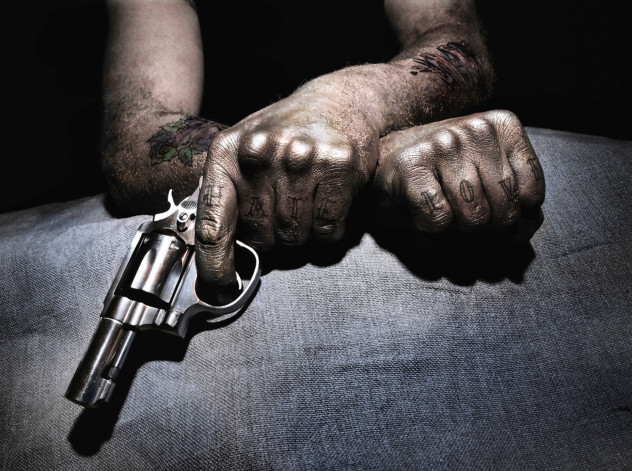
Sleepers, which was made into a movie in 1996, is a harrowing memoir about four boys from New York City, who were incarcerated at a reform school after a prank went dangerously wrong. While in the reform school they were mentally, physically, and sexually abused by group of guards, led by a man named Sean Nokes.
Nineteen years later, two of the boys—John and Tommy—are violent gang members. Michael is an Assistant District Attorney and Lorenzo is a journalist and, of course, the author of the novel. One night, John and Tommy happen upon Nokes and kill him in front of witnesses. They are arrested, and the four former friends find themselves involved with the trial over the murder of their abuser. Michael is prosecuting his old friends and Lorenzo is covering the story for his newspaper. Together they conspire and Carcaterra even claims that a popular Roman Catholic priest lied in court for them, saying that he was with John and Tommy on the night Nokes was murdered.
It is an amazing story with plenty of unbelievable twists and turns. Too unbelievable for a few critics. If the novel were true, it is essentially a confession to a number of crimes. The church and school that Carcaterra attended denied the story, and the district attorney said there is no record of a case similar to the one Carcaterra depicted. Carcaterra claimed that he only changed the names of people and places to protect some people, but maintains that it is 100 percent accurate.
5My Life Among The Serial Killers
Helen Morrison And Harold Goldberg

During her career as a forensic psychiatrist, Dr. Helen Morrison claimed she interviewed over 60 serial killers. The culmination of her life’s work was the subject of her novel, My Life Among the Serial Killers. Since its release, critics and serial killer experts have taken Morrison to task about the factual information and some of her outrageous claims.
The first major criticism is that Morrison has her own classification for serial killers—she only considers someone a serial killer if there are seven or more victims. She felt that three was too low.
Another major problem is her vast generalizations of serial killers. According to her book, they are all men who are hollow shells of people with no real feelings or emotions. She also doesn’t believe that there is a sexual motivation with serial murders. In another instance, she says that serial killers don’t drink, do drugs, or smoke. However, serial killers like Henry Lee Lucas and Jeffrey Dahmer both had well-known problems with alcohol.
Another big mistake was that she got a movie mixed up with real life. She said Ed Gein had his mother stuffed and put her on the couch, even though Gein didn’t do that. Gein did dig up graves, but his mother’s wasn’t one of them. Morrison is actually thinking of Norman Bates in Psycho. This is an incredibly huge mistake for someone claiming to be one of the most prolific serial killer profilers of all time.
Which leads to a more alarming criticism—there is no proof that she met with 60 serial killers. Critics felt that number was way too high. For example, one of the most famous profilers of all time, Robert Ressler—who started the FBI’s Behavioral Science Unit—has only spoken to about 40.
Incredibly, one of her most outrageous claims is that there is a serial killer gene. She further claims that the gene couldn’t be passed from father to son. When asked to explain the science, she says it’s too complicated. It’s unclear if Morrison is sure how genetics work. At one point she ponders if there is a genetic mutation that helped make someone like John Wayne Gacy look human—which is crazy because Gacy was, in fact, human.
4Lost Girls
Caitlin Rother

Being a true crime writer is an interesting way to make a living. Essentially, they make money by telling the story of other people’s misery. A notable example of when this became a major problem is Caitlin Rother’s Lost Girls.
The book tells the story of California rapist and murderer John Albert Gardner. Gardner was an out-of-prison sex offender who had a questionable parole record, yet he managed to complete his parole term in 2008. In February 2009, he kidnapped and murdered 14-year-old Amber Dubois and in February 2010, he did the same to 17-year-old Chelsea King. He was arrested after DNA linked him to the crimes. He agreed to a plea deal and avoided the death penalty.
Journalist Caitlin Rother heard about the story and wanted to write about it, so she contacted the families of both Dubois and King. The two families wanted nothing to do with the book. After all, they had tragically lost a family member to a very violent act. They didn’t want to “reopen old wounds.” Nor did they want the rape and murder of their daughters to be a source of profit for a journalist.
Nevertheless, Rother went ahead with the novel and at book signings, she was confronted by Amber’s mother. Both families have asked that all the proceeds go to charity. Rother said her intention of publishing the book was to tell an important story about a failure of the system involving sex offenders. Rother also said that while she does make her living as a writer, she won’t make a lot in the way of profit on Lost Girls.
3Echoes In The Darkness
Joseph Wambaugh

On Friday, June 22, 1979, high school English teacher Susan Reinert and her two children, 11-year-old Karen and 10-year-old Michael, drove off into a hailstorm. At some point, they met up with at least two people. Susan was beaten and chained up. She was killed 24–36 hours later with a morphine overdose. Her body was found in the trunk of her car. The bodies of her children have never been found.
Suspicion immediately fell upon Bill Bradfield, who was a fellow teacher. Susan and Bradfield had started an affair five years prior, while Reinert was still married and Bradfield was living with another teacher. Reinert had given Bradfield $25,000 to invest; he was also named as the beneficiary in her will and a number of life insurance policies. He was arrested and convicted in 1983 of all three murders.
At some point after Bradfield’s conviction, best-selling author and 14-year Los Angeles Police Department veteran, Jim Wambaugh, began writing a novel about the case. However, there was still one more interesting character to enter the story: Dr. Jay Smith.
Smith was the former principal at the school where Reinert and Bradfield worked. Bradfield had blamed the murders on Smith, saying he was a dangerous man who had always wanted to kill Reinert. Smith was doing a two-year stint in prison for wearing a Brinks uniform to a Sears store and attempting to rob them. The weekend the Reinerts went missing was the weekend that Smith was supposed to report to prison.
Bradfield had also testified at Smith’s robbery trial, giving him an alibi saying he had seen the former principal at a different place during the time of the robbery. Authorities believed that Bradfield and Smith made a deal where Bradfield would provide an alibi for Smith, if Smith helped him kill Reinert. It was an odd theory, considering Smith was found guilty of the robbery. Nevertheless, Smith was charged and convicted of the three murders, despite there being no physical evidence connecting him to the crime. He was sentenced to death in 1986.
In 1987, Wambaugh published Echoes in the Darkness and that same year, it was made into a two-part made-for-TV movie. However, in the 1990s, an interesting revelation came to light. Wambaugh had paid lead investigator John J. Holtz $50,000 for information. He also especially wanted information that implicated Smith, because he, “Didn’t think the book would work until something happened to Smith.” Neither Wambaugh nor Holtz deny the exchange of money.
Smith sued and, while his suit wasn’t successful, his conviction was reversed and he was released in 1992. He proclaimed his innocence until his death at the age of 80 in 2009, shortly after he self-published his own book, Joseph Wambaugh and the Jay Smith Case. Bradfield died from a heart attack in prison in January 1998, without ever telling Karen or Michael’s father where the remains of his two children were.
2Fatal Vision
Joe McGinniss

Journalist Joe McGinniss first rose to fame when his novel, The Selling of the President 1968, became a best seller. The novel was the first to expose the way presidential candidates are marketed to the public. He continued to write novels and memoirs until the early 1980s when he turned to true crime.
In 1982, McGinniss contacted Green Beret Captain Jeffrey MacDonald. In 1970, according to MacDonald, a group of hippies broke into his home in Fort Bragg, North Carolina and severely beat and stabbed his pregnant wife and two daughters to death. All the bodies had been stabbed over 30 times with a knife and another 10 times with an ice pick. MacDonald on the other hand had suffered a concussion and only one stab wound that wasn’t close to lethal.
For years, MacDonald was suspected of the murders and was investigated by the Army, before he was indicted by a grand jury. In 1979, MacDonald was set to go to trial. McGinniss contacted him and essentially told him that part of the proceeds of the book would go to help pay for his defense and that McGinniss’s book would show MacDonald as an innocent victim.
Because of the deal, McGinniss was given amazing access to the defense’s case. McGinniss even sat beside MacDonald in trial and lived with him at one point. After MacDonald was found guilty, McGinniss wrote letters showing sympathy for him, all the while pumping him for information.
McGinniss published Fatal Vision in 1983, and it was the complete opposite of what MacDonald expected. McGinniss claimed he had changed his mind early on in the case in regards to MacDonald’s innocence but never told MacDonald this. He wrote the book spelling out that MacDonald was guilty. MacDonald sued and settled out of court, with MacDonald getting $325,000.
McGinniss’s relationship with MacDonald was so controversial that journalist Janet Malcolm, wrote about it in a famous article in The New Yorker, which was eventually expanded into a book called The Journalist and the Murderer. In 2012, famed documentary-maker Errol Morris published A Wilderness of Error, which argues that MacDonald is actually innocent.
1In Cold Blood
Truman Capote

In Cold Blood is often considered to be one of the first true crime novels. It was also the first nonfiction novel published in America and is considered one of the greatest American novels ever written.
It is the story of the Clutter family murder in 1959 in Holcomb, Kansas. Parolees Richard Hickock and Perry Smith broke into the Clutters’ house to rob them. They ended up shooting the four family members living at the house, including the two teenage daughters. Capote and longtime friend, To Kill A Mockingbird author Harper Lee, traveled to Holcomb and did extensive research on the family and the crime. This was before the killers were even caught. After they were arrested, Capote did extensive interviews with the two murderers, especially Smith.
The novel has been quite controversial since its release, in large part owing to the fact that Capote was adamant that the novel was “immaculately factual.” Which isn’t exactly true. According to Kansas Bureau of Investigation (KBI) files, it appears that Capote exaggerated or even changed facts in a number of aspects of the novel to benefit the story.
For example, he got basic facts wrong. Like the price for which a Clutter horse was sold. Other times it embellishes the truth, like the relationship between Undersheriff Wendle Meier’s wife, Josephine, and Smith. In the book, they have a tender, close relationship, but when interviewed in 1966, Josephine denied their relationship was anything like that.
It also appeared that KBI Lead Investigator Alvin Dewey and Capote had a controversial working relationship. For example, Dewey’s wife was hired on, with a lucrative salary, to be an adviser on the set of the 1967 adaptation of the novel. For his part, Dewey let Capote look at the files on the case, even going as far as to let Capote read 16-year-old Nancy Clutter’s diary.
The relationship also affected the way Capote writes about Dewey. Dewey is depicted as a hardworking, no-nonsense lawman, who cracks the case after six weeks, risking mental and physical health to bring the men to justice. When in reality, Dewey had been given a tip on Hickock and Smith on December 4, just 19 days after the murder. The tip had come from Floyd Wells, who used to work on the Clutters’ farm. He had been in prison with Hickock and had told him that Clutter kept a safe full of money on the farm.
Dewey apparently ignored the tip, following his own belief that the murderer was someone local, who had a vendetta against the Clutters. As a result, Hickock and Smith were on the lam until December 30.
Some investigators have raised serious questions about what Smith and Perry did during those six weeks. Some have even suggested that they committed other crimes, such as murdering four members of the Walker family in Osprey, Florida. However, both Smith and Perry passed a polygraph and their fingerprints didn’t match those at the scene. Hickock and Smith’s bodies were exhumed to perform a DNA test. However, they found that the samples had deteriorated too much and they were unable to be certain if there was a match.
+If I Did It
O.J. Simpson
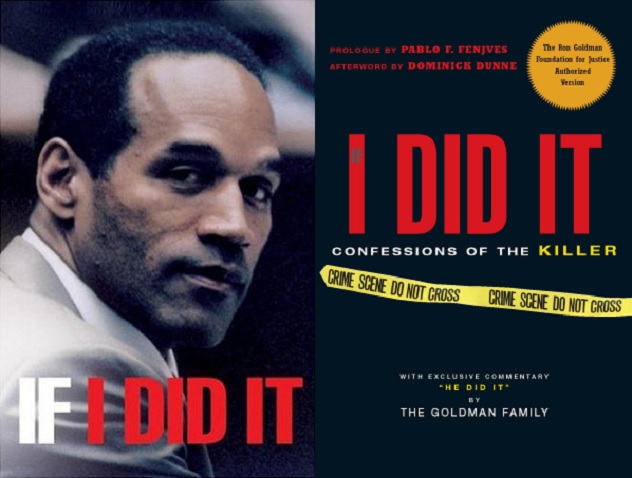
One of the more infamous novels in recent times is O.J. Simpson’s novel If I Did It. In the book, Simpson explains how the murder of Nicole Brown and Ron Goldman “theoretically” happened. The book sparked outrage immediately and was canceled by the publisher. The Goldmans were awarded the rights to the book, because Simpson still hadn’t paid the money he owed the Goldmans from the civil suit they won in 1997. With the rights, they changed the original cover design (on the left) to make the “If” very small, and hidden in the “I” to make it look like “I Did It.”
Robert Grimminck is a Canadian crime-fiction writer. You can follow him on Facebook , on Twitter @RobertGrimminck, or visit his website .
